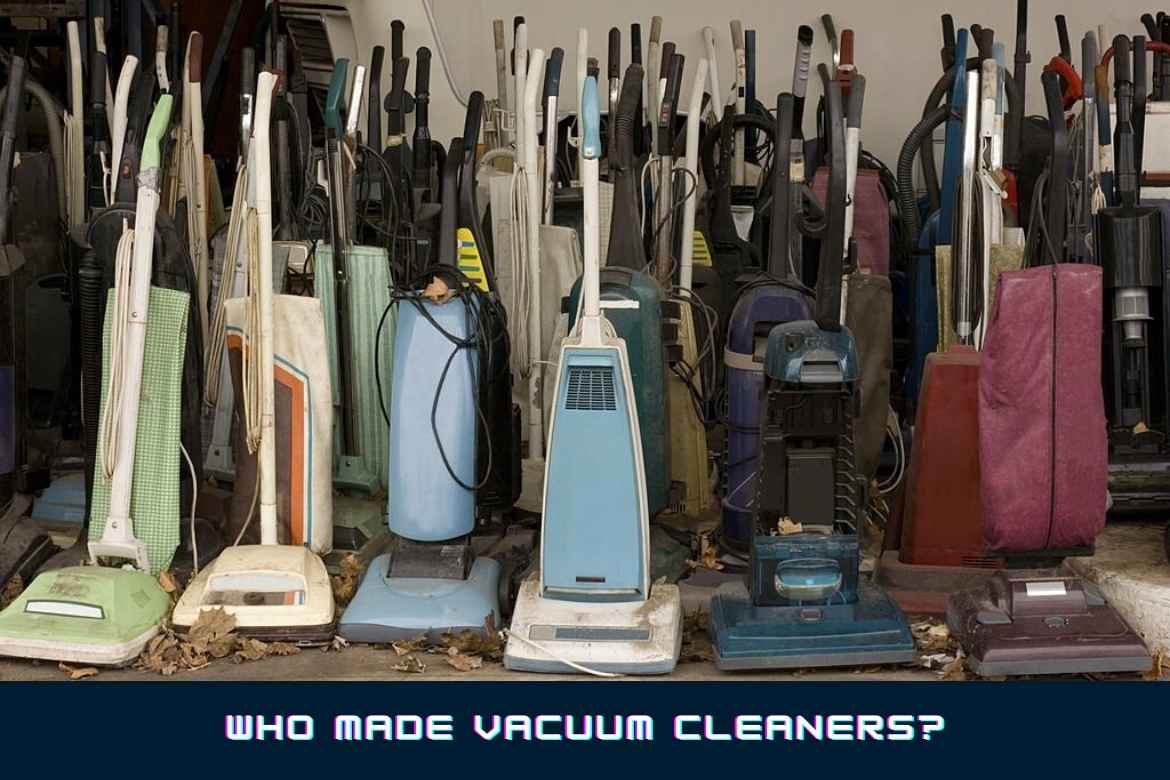In the fast-paced, gadget-filled world of today, the vacuum cleaner stands as a quiet champion of cleanliness in modern households. This humble household appliance, which we often take for granted, has made our lives considerably easier. It’s hard to imagine a time when sweeping or beating carpets was the primary method of cleaning, but it wasn’t too long ago when the vacuum cleaner didn’t exist.
The objective of this article is to take you on a journey through time, exploring the fascinating history and innovators behind the invention of the vacuum cleaner. We’ll delve into the minds of ingenious individuals who, through their creativity and innovation, have transformed the way we maintain clean homes.
To kick things off, consider this: According to ACI’s latest National Cleaning Survey, the average American household spends approximately 6 hours per week cleaning. That’s a staggering 312 hours a year dedicated to the pursuit of cleanliness. It’s no wonder that the vacuum cleaner has earned a significant place in our lives, significantly reducing the time and effort required to keep our homes spotless. That’s why we need to thank the inventors behind this amazing creation!
Table of Contents
ToggleEarly Household Cleaning Methods
1. Cleaning in the 19th and Early 20th Centuries
To truly appreciate the innovation behind the vacuum cleaner, we must journey back in time to an era where cleanliness was more of a back-breaking chore than the convenient routine it is today. In the 19th and early 20th centuries, households faced a daunting challenge when it came to keeping their living spaces clean.
Imagine, for a moment, a time when the clattering of broom bristles against wooden floors and the rhythmic thumping of carpet beaters were the sounds that accompanied household chores. In these bygone days, the dust and dirt that accumulated in our homes were not easily tamed. It was a laborious and time-consuming process, requiring great physical effort.
The prevalence of heavy curtains and upholstered furniture meant that dust and allergens found ample hiding places, causing health concerns that were not well understood at the time. The question “when was the vacuum cleaner made?” was a pressing one, but the answer was yet to be discovered.
2. The Transition From Brooms and Carpet Beaters
As the challenges of manual cleaning became increasingly apparent, inventors and innovators began to seek solutions. The transition from primitive cleaning methods to more effective tools was the first step towards the creation of the modern vacuum cleaner.
In the late 1860s, the idea of a mechanical cleaner started to take shape. An inventor named Daniel Hess patented the first vacuum cleaner in the United States, an innovative device that used bellows, suction, and rotating brushes to remove dirt and debris from carpets. While it marked a significant step forward, it was far from the compact, user-friendly machines we know today.
The quest for more efficient cleaning continued, driven by the desire to free households from the drudgery of constant dusting and sweeping. It was a journey that would lead to the birth of the vacuum cleaner we now rely on, thanks to the visionary inventors who refused to accept the status quo.
3. The Birth of the Vacuum Cleaner
Before we dive headfirst into the world of early vacuum cleaner inventors, it’s worth understanding why this ingenious device was given the name “vacuum cleaner.” The word “vacuum” refers to a space devoid of matter, a void, or emptiness. In the context of a vacuum cleaner, it’s all about creating a space where air pressure is lower, creating suction to lift dirt and debris from your floors and carpets.
The concept of a vacuum cleaner revolves around this fundamental principle: creating a low-pressure environment that draws in the unwanted particles cluttering our homes. And, while we now take this notion for granted, it was a revolutionary idea back in the day.
4. Inventors Who Contributed to the Vacuum Cleaner's Development
- Daniel Hess – The Precursor
The question “Who made the first vacuum cleaner?” leads us to the ingenious mind of Daniel Hess. In 1860, he patented a machine known as a “carpet sweeper,” the precursor to what we know as the vacuum cleaner today. This invention used bellows to create suction and had a rotating brush to dislodge dirt from carpets. While it was a remarkable start, the machine was far from the sleek, user-friendly vacuum cleaners we have now.
- Ives W. McGaffey – The Patented Cleaner
Fast forward to 1869, when Ives W. McGaffey of Chicago patented a device called the “sweeping machine.” This contraption featured a hand-cranked fan that created suction to remove dirt from carpets too. McGaffey’s invention was considered a significant leap in household cleaning technology. His patent may have been the answer to “who made the first vacuum cleaner,” but it was still a far cry from what we have in our homes today.
- John S. Thurman – The Horse-Drawn Vacuum
One of the more unconventional entries in the vacuum cleaner’s lineage was the horse-drawn vacuum cleaner invented by John S. Thurman in 1899. It was so large that it had to be mounted on a horse-drawn cart and driven from house to house. This behemoth was known as the “pneumatic carpet renovator.” While it might not be practical for today’s homes, it was a fascinating step towards creating a portable cleaning machine.
5. Early Vacuum Cleaner Designs
Hoover's Revolution: The Electric Vacuum Cleaner
1. The First Electric Vacuum Cleaner
2. How Hoover's Innovative Designs Revolutionised Household Cleaning
William Henry Hoover’s contributions didn’t stop at the Model O. He continued to innovate, and in 1926, he introduced the Hoover 700, a cleaner equipped with a beater bar. This innovation was a game-changer, as it not only suctioned dirt but also agitated the carpet, dislodging deeply embedded dust and grime. The introduction of the beater bar was a defining moment in the evolution of vacuum cleaner technology, setting the standard for decades to come.
Hoover’s relentless pursuit of improvement and innovative designs marked a significant shift in the world of household cleaning. His company played a pivotal role in answering the question, “Who invented the vacuum cleaner first?” by not only making it a reality but also continually pushing the boundaries of what these machines could achieve.
The Dyson Revolution: Bagless and Modern Design
Our journey through the history of the vacuum cleaner now brings us to the innovative mind of Sir James Dyson. While the early 20th century marked a significant leap with electric vacuum cleaners, the late 20th century saw another revolution: the introduction of bagless vacuum technology.
Bagged vacuum cleaners, although efficient, had their drawbacks. Emptying and replacing bags were often messy and costly. Sir James Dyson recognised these shortcomings and sought to create a cleaner that didn’t rely on disposable bags. In the early 1980s, he developed the first bagless vacuum cleaner, forever changing the way we think about vacuuming.
1. Sir James Dyson's Contributions to Vacuum Cleaner Design
Sir James Dyson was more than just an inventor; he was a visionary. He introduced a cyclonic separation system that set his vacuum cleaners apart. This technology used centrifugal force to separate dirt and dust from the air, collecting it in a clear bin that users could easily empty, eliminating the need for bags altogether.
Dyson’s relentless pursuit of better design led to not only bagless technology but also a sleek, modern, and highly efficient design. His machines became known for their innovative ball technology, which allowed for greater manoeuvrability, and their powerful suction capabilities, making them highly effective at cleaning a wide range of surfaces.
2. The Impact of Dyson's Cyclonic Separation Technology
Contemporary Innovations
1. Robotic Vacuums: The Rise of Automation
The evolution of the vacuum cleaner has brought us to a remarkable era of automation and convenience. Robotic vacuums, often affectionately referred to as “robovacs,” have become increasingly popular in modern households. These compact, self-guided machines have truly changed the way we think about vacuuming.
Imagine coming home to clean floors without lifting a finger. Robotic vacuums are equipped with sensors and smart navigation systems that allow them to autonomously move around your home, cleaning as they go. They can detect obstacles, adjust their cleaning patterns, and even return to their charging stations when their work is done. This innovation is a testament to how far the vacuum cleaner has come in terms of technology and convenience.
2. Smart Features and IoT Integration in Modern Vacuum Cleaners
In our interconnected world, it’s no surprise that vacuum cleaners have joined the Internet of Things (IoT). Modern vacuum cleaners often come equipped with smart features that can be controlled via a smartphone app or integrated with voice assistants like Amazon’s Alexa or Google Assistant. These features allow users to schedule cleanings remotely, monitor the vacuum’s progress, and even receive maintenance alerts.
Moreover, some advanced models are equipped with room mapping technology, which allows the vacuum to create a digital map of your home, ensuring comprehensive and efficient cleaning. These smart features have made the vacuum cleaner not just a household tool but a part of the smart home ecosystem.
3. Sustainable and Eco-Friendly Vacuuming Technologie
As the world becomes more environmentally conscious, so does the vacuum cleaner industry. Sustainable and eco-friendly vacuuming technologies are emerging as a response to the need for greener, more responsible cleaning methods.
Some manufacturers are developing vacuum cleaners that use less energy, reducing their carbon footprint. Also, there’s a growing trend towards designing vacuum cleaners with reusable or biodegradable components, minimising waste in the long run. These innovations are a step in the right direction to reduce the environmental impact of household cleaning too.
Final Words
As we conclude our journey through the evolution of the vacuum cleaner, we find ourselves in an era where technology, convenience, and sustainability converge to shape the way we keep our homes clean.
The remarkable transformation from brooms and carpet beaters to robotic, smart, and eco-friendly vacuum cleaners is a testament to human ingenuity and the ever-evolving quest for cleaner, healthier living spaces. The vacuum cleaner, a humble invention born from necessity, has, in its own quiet way, revolutionised our lives, thanks to its amazing creators throughout history.

